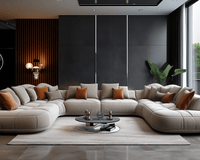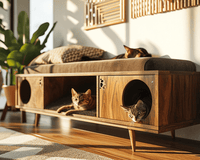Introduction
Choosing the right coffee table is a crucial aspect of interior design, impacting both aesthetics and functionality. The size of your coffee table can significantly influence the overall balance of your living space. In this in-depth guide, we'll explore the factors to consider when determining the ideal size for your coffee table, ensuring it not only complements your decor but also serves its purpose seamlessly.
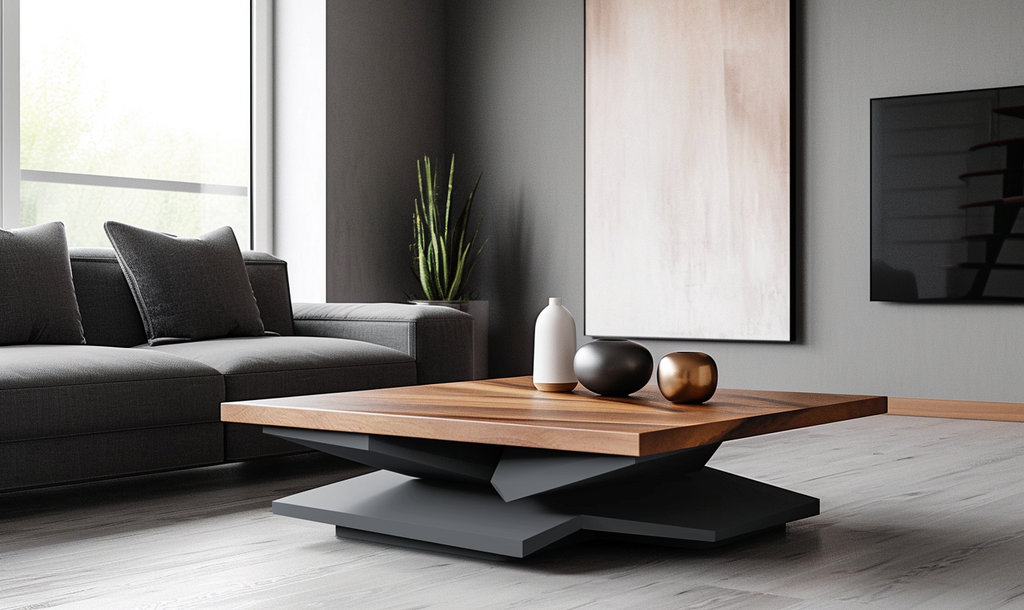
Relation to Seating Arrangement
Consider the Sofa Length
- Proportional Harmony:The length of your coffee table should be proportionate to the size of your sofa. An ideal guideline is to aim for a coffee table that is approximately two-thirds the length of your sofa. This proportional harmony ensures that the table complements the sofa without overshadowing it or appearing disproportionately small. The goal is to create a cohesive look that anchors the seating area and enhances the overall aesthetics of the room.
- Accessibility from All Angles:Beyond visual appeal, the size of the coffee table in relation to the sofa influences practicality. Consider the ease of accessibility from all seating positions. Whether someone is seated at the far end of a sectional sofa or on a cozy chair adjacent to the main seating area, the coffee table should be within comfortable reach. This ensures that everyone can conveniently access the table for drinks, snacks, or other items, fostering a more inclusive and functional arrangement.
- Adjusting for Different Sofa Configurations:Sofas come in various configurations, from traditional threeseats to sectional or L-shaped designs. When considering the sofa length, adapt the size of the coffee table to the specific configuration of your seating. For larger sectionals, you might need a broader or multiple coffee tables to maintain proportional harmony. Similarly, if you have a compact love-seat, opting for a smaller table prevents overcrowding. By adjusting the coffee table size based on your sofa's unique dimensions, you ensure a tailored and balanced look that enhances the overall appeal of your living space.
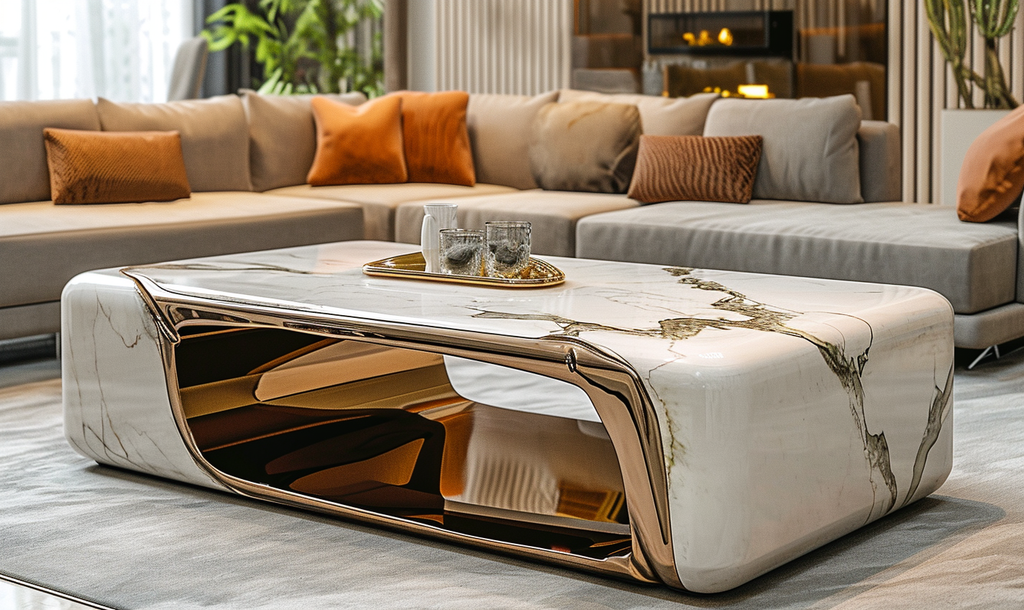
Maintain a Comfortable Reach
- Accessibility for Everyone:A key aspect of maintaining a comfortable reach is to cater to the needs of everyone in the room. Whether you have guests or family members seated on different types of furniture, the coffee table should be strategically positioned to allow for easy access. This inclusivity ensures that everyone can reach the table without strain, promoting a welcoming environment where social interactions are facilitated seamlessly. Consider the arrangement of chairs, sofas, and additional seating elements to guarantee that the coffee table is conveniently within reach for everyone sharing the space.
- Balancing Proximity and Spaciousness:While ensuring accessibility, it's essential to strike a balance between the proximity of the coffee table and the overall spaciousness of the living area. Placing the table too close to the seating might create a feeling of overcrowding, impeding movement and visual flow. On the other hand, positioning it too far away can compromise convenience. Finding the sweet spot – where the table is close enough for easy reach but maintains a sense of openness – is key. This careful balance contributes to a harmonious layout, where the coffee table serves as a functional centerpiece without dominating the room.
- Adapting to Different Seating Arrangements:Homes often feature diverse seating arrangements, from traditional sofas to eclectic combinations of chairs and ottomans. When maintaining a comfortable reach, consider the flexibility of your seating configuration. If you have a modular or flexible arrangement that allows for occasional rearrangements, choose a coffee table placement that accommodates these changes. This adaptability ensures that, regardless of the seating arrangement, the coffee table remains a convenient and accessible focal point. It allows for a dynamic living space that can evolve based on your needs, ensuring that the table continues to serve its purpose seamlessly.

Balance with Other Furniture
- Cohesive Stylistic Integration:When considering the size of the coffee table, it's crucial to think about how it integrates stylistically with other furniture pieces in the room. Aim for a cohesive look by selecting a table that aligns with the design, color palette, and overall aesthetic of the surrounding furniture. Whether your decor leans towards modern minimalism or classic elegance, the coffee table should seamlessly blend in, creating a unified and visually appealing composition.
- Proportional Sizing:Maintaining balance extends to the proportional sizing of furniture within the space. Ensure that the coffee table is in proportion not only to the sofa but also to other key furniture items, such as side tables, accent chairs, or entertainment units. Consistency in sizing prevents one piece from dominating the visual landscape and promotes an even distribution of visual weight throughout the room. This balanced approach enhances the overall flow and cohesion of the furniture arrangement.
- Functional Synergy:Consider the functional synergy between the coffee table and other furniture elements. If you have side tables or additional seating, ensure that the coffee table complements their purposes rather than conflicting with them. For example, if side tables are present, the coffee table's size should allow for a comfortable transition between these elements. This functional synergy ensures that the furniture arrangement not only looks harmonious but also serves the practical needs of the space.

Account for Room Size
- Scale Appropriately in Smaller Rooms:In smaller rooms, opt for a coffee table that is proportionate to the available space. A compact table ensures that the room doesn't feel overcrowded, allowing for comfortable movement and a more open ambiance. Consider the scale of the furniture and leave enough breathing space to create an inviting and visually pleasing environment.
- Fill Larger Spaces Adequately:For larger rooms, a substantial coffee table can anchor the seating area and prevent it from feeling sparse. Avoid choosing a table that is too small for the room, as it may get lost in the expansive space. Opt for a table that fills the visual void, creating a cohesive and well-balanced arrangement that complements the room's scale.
- Create Visual Harmony in Irregularly Shaped Rooms:In rooms with irregular shapes or unique layouts, adapt the size of the coffee table to create visual harmony. Consider the flow of the room, the placement of doors and windows, and any architectural features. A well-proportioned coffee table enhances the overall balance, ensuring that it fits seamlessly into the room's contours without disrupting the natural flow of the space.
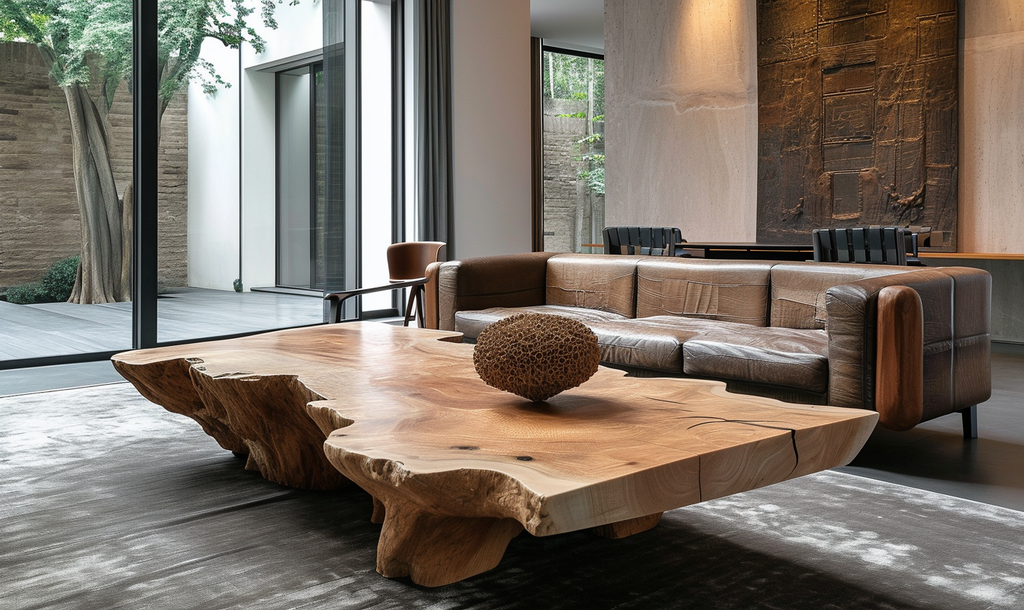
Height Matters
Align with Seating Height
- Visual Cohesion:Aligning the coffee table with seating height promotes visual cohesion. When the table is level with or slightly below the seating, it forms a seamless line, contributing to a unified and harmonious look. This visual continuity creates a sense of balance that enhances the overall appeal of the seating area.
- Comfortable Interaction:Maintaining alignment with seating height ensures comfortable interaction. Whether used for placing drinks, snacks, or decorative items, the coffee table becomes an easily accessible surface. This practicality fosters a more enjoyable and functional experience for individuals seated around it, promoting a sense of convenience and ease.
- Flow with Surrounding Elements:The alignment with seating height allows the coffee table to flow naturally with surrounding elements. Whether it's sofas, chairs, or other furniture pieces, a consistent height contributes to a well-integrated and thoughtfully designed space. This flow enhances the overall aesthetic and contributes to the cohesiveness of the furniture arrangement.
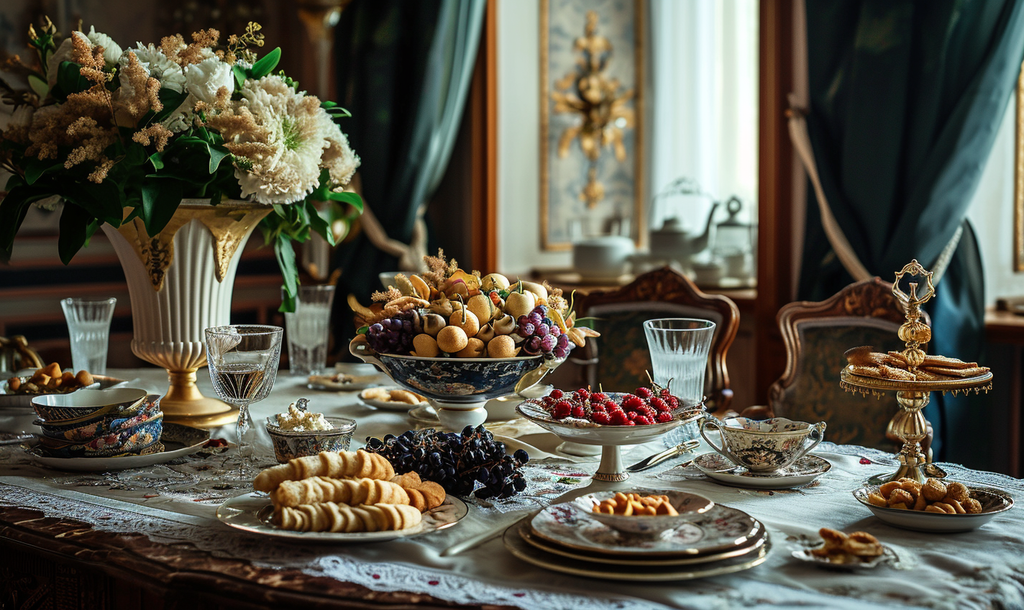
Consider Functionality
- Storage Solutions:Consider coffee tables with built-in storage solutions. Drawers, shelves, or hidden compartments add functionality, allowing you to keep essentials like remote controls, magazines, or small items neatly organized. This enhances the usability of the table beyond its surface.
- Multifunctional Design:Opt for a coffee table with multifunctional design features. Adjustable heights, expandable surfaces, or even convertible tables offer versatility. This adaptability ensures that the table can meet various needs, from casual dining to providing additional workspace when necessary.
- Durability and Maintenance:Evaluate the material and construction of the coffee table with an emphasis on durability and ease of maintenance. Choose materials that can withstand daily use, especially if you have children or pets. Stain-resistant surfaces and sturdy construction contribute to a table's longevity and practicality in the long run.

Factor in Surrounding Elements
- Harmonizing with Furniture Styles:Ensure that the coffee table harmonizes with the styles of surrounding furniture. Whether it's a modern sofa, classic armchairs, or eclectic decor, the table should complement rather than clash with the existing elements. This cohesiveness contributes to a unified and aesthetically pleasing environment.
- Aligning with Room Theme:Factor in the overarching theme or design concept of the room. The coffee table should align with the room's overall aesthetic, contributing to a seamless blend of styles and creating a visually cohesive atmosphere. This alignment ensures that the table becomes an integral part of the room's narrative.
- Balancing Visual Weight:Consider the visual weight of surrounding elements. If you have bold or heavy furniture pieces, the coffee table should balance this visual weight appropriately. This balance prevents any single piece from dominating the space, creating a harmonious arrangement where each element contributes to the overall design without overpowering others.
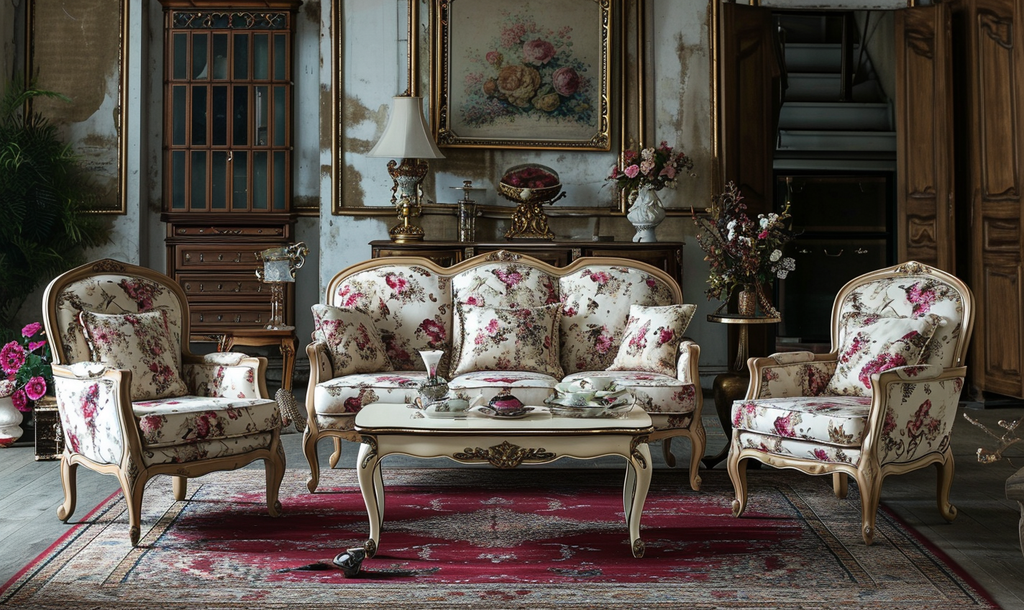
Shape and Style Influence
Round Tables for Flow
- Facilitating Traffic Flow:Round tables naturally facilitate traffic flow in the room. Their absence of sharp corners makes them ideal for smaller spaces, where their smooth contours create a sense of openness. Guests can easily navigate around a round table without encountering obstacles, promoting a more fluid movement within the room.
- Softening Lines in the Room:The rounded shape of the table softens the lines in the room. In contrast to angular furniture, a round coffee table introduces a sense of gentleness to the space. This is particularly beneficial in rooms with predominantly straight lines or sharp edges, helping to create a more inviting and harmonious environment.
- Enhancing Conversational Setups:Round tables are conducive to creating intimate and conversational seating arrangements. Placed in the center of a seating group, a round table allows everyone to face each other comfortably. This setup encourages interaction and engagement, making it an ideal choice for spaces where fostering social connections is a priority. The round shape promotes inclusivity, ensuring that all individuals seated around the table feel equally involved in the conversation.

Rectangular Tables for Long Spaces
- Utilizing Long Surface Area:Rectangular tables maximize surface area, making them ideal for long rooms. Their extended length provides ample space for decorative displays, serving snacks, or organizing items. This functional aspect ensures that the table not only complements the room's dimensions but also serves practical purposes effectively.
- Aligning with Furniture Arrangement:Rectangular tables align seamlessly with furniture arrangements, especially when paired with long sofas or sectional seating. The parallel lines formed by the table and seating elements contribute to a sense of order and organization. This alignment enhances the overall symmetry of the room, creating a balanced and visually appealing layout.
- Creating Focal Points:The linear nature of rectangular tables allows for the creation of focal points within long spaces. Placing the table strategically can define specific zones within the room, such as a central focus for seating or a display area for decorative elements. This intentional placement adds depth and interest to the room, transforming the rectangular table into a key element that enhances the overall design of the space.

Square Tables for Symmetry
- Symmetrical Arrangements:Square tables naturally complement symmetrical furniture arrangements. Placing a square table in the center of a seating area with matching chairs or sofas on each side creates a balanced and visually appealing composition. The inherent symmetry of the square shape contributes to a cohesive and organized look in the room.
- Ideal for Sectional Sofas:Square tables are particularly well-suited for pairing with sectional sofas. The equal length on all sides of the table aligns seamlessly with the linear structure of a sectional, creating a unified and well-proportioned arrangement. This compatibility ensures that the square table complements the overall design of the seating ensemble.
- Versatility in Placement:The symmetrical nature of square tables provides versatility in placement. Whether positioned at the center of the room or pushed against a wall, a square table adapts to various spatial configurations without compromising visual harmony. This adaptability allows for flexibility in furniture arrangements, making square tables a versatile choice for different room layouts.
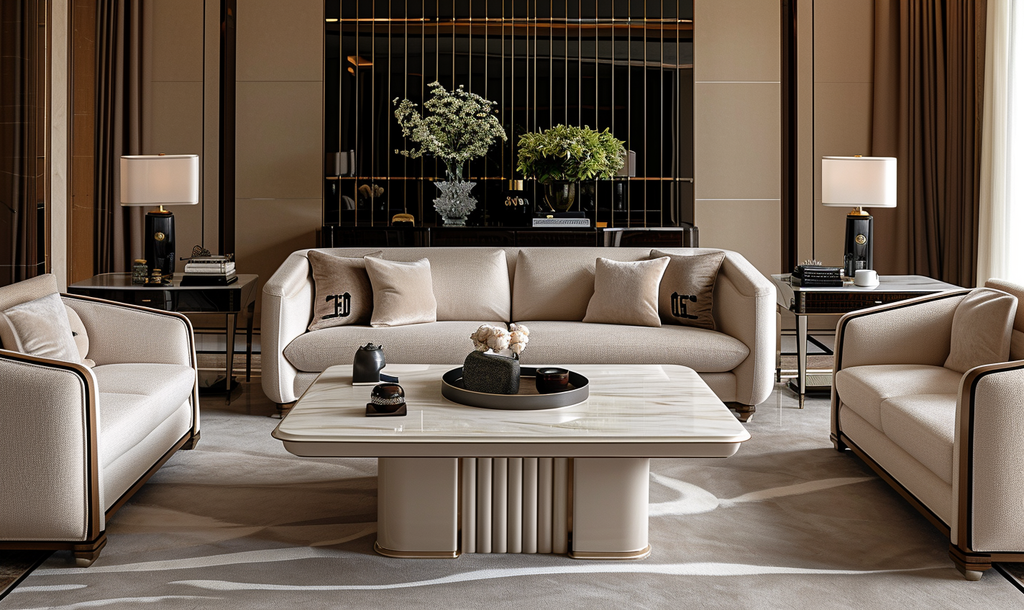
Conclusion
The size of a coffee table is a crucial element in achieving a well-balanced and functional living space. By considering proportions, height, shape, style, and practical considerations, you can choose a coffee table that not only enhances your decor but also seamlessly integrates into your lifestyle. Remember that the perfect coffee table is not just about aesthetics – it's about creating a space that reflects your personality and meets the needs of your everyday life.
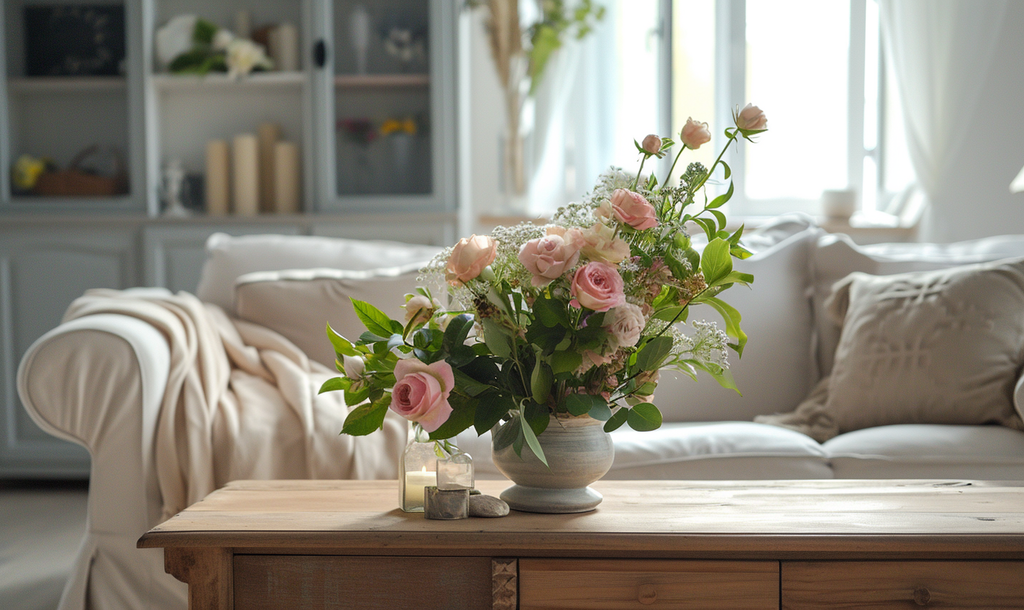
Call to Action
Ready to transform your living space with the perfect coffee table? Explore our curated collection of stylish and functional coffee tables that cater to your unique preferences. Whether you're drawn to the flowing lines of round tables, the practicality of rectangular options, or the symmetry of square designs, we have the ideal piece for you. Elevate your home decor and enhance your daily living experience. Don't miss out – discover the coffee table that aligns seamlessly with your style and room layout today!
Frequently Asked Questions (FAQ)
1. What is the ideal distance between a coffee table and sofa for easy access?
Aim for a distance of 18 inches to ensure comfortable reach from all seating positions.
2. Can a coffee table be taller than the sofa?
Yes, a coffee table can be slightly higher, but maintaining alignment with or slightly below seating height is generally recommended for visual harmony.
3. Are there specific size recommendations for small living rooms?
Choose a compact coffee table proportional to seating in small living rooms. Ensure it fits well, allowing comfortable movement without overwhelming the space.
4. Should I prioritize style or functionality when choosing a coffee table?
Yes, prioritize both style and functionality. A well-balanced coffee table enhances aesthetics and serves practical needs, contributing to a visually appealing and functional living space.
5. Can an adjustable coffee table meet different needs in a living space?
Yes, adjustable coffee tables offer versatility for various activities, such as dining, working, or creating a decorative focal point.





